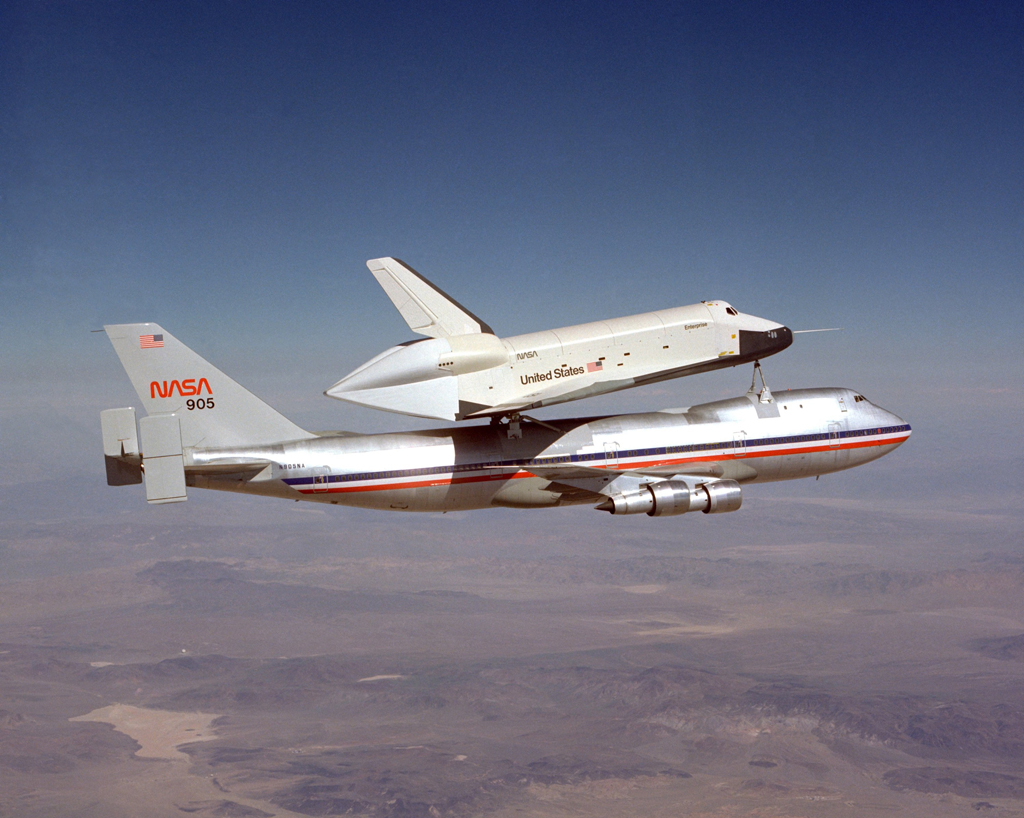By Haley Stephenson
Panelists at the forum discuss informal and formal ways of giving project teams the knowledge they need.
The NASA Academy of Program/Project and Engineering Leadership, along with co-host MITRE, brought together knowledge experts from NASA centers and members of industry and academia for the Academy’s second NASA Knowledge Forum in April. MITRE hosted the event in San Diego, California. 
“The rubber meets the road in projects,” said Jean Tatalias, director of Knowledge Services at MITRE, at the beginning of the daylong discussion. “We have been working toward improving our knowledge sharing and knowledge management.” Tatalias pointed out that MITRE had been managing knowledge for fifty years. “You might think, ‘Well, fifty years, you must have it all done,'” she continued, “but we all know if you work in KM [knowledge management], it’s never really done.”
Over the course of the day, attendees shared stories and ideas about knowledge in projects. As projects increase in complexity, they demand greater organizational attention to identify and transfer valuable knowledge effectively. In addition to NASA and MITRE, representatives from organizations including Petrobras, the International Centre for Complex Project Management, MWH Global, the University of Southern California Marshall School of Business, Greenes Consulting, Fluor, and Common Knowledge Associates gathered to explore staffing, knowledge preservation, and communication, as well as to exchange stories, research, ideas, and experiences.
Defining “Community”
Paul Adler, professor at the Marshall School of Business at the University of Southern California, opened the forum by challenging the attendees to define what it means to be a community, asking, “What makes a group of people a community?” It is an important question in a discussion of project knowledge because so much organizational knowledge is developed and shared in communities.
Communities share a vision, purpose, identity, or values, the group agreed. A community has a common language and shares time and information. Communities built around science, religion, art, military, politics, and hobbies are often characterized by different hallmarks. For instance, the arts place great value on individual contributions, whereas the military focuses more upon the whole. Religious communities tend to respect and preserve tradition, while scientific communities gravitate toward innovation. “What I’m struck by is that some of these communities … need exactly the right context to stimulate innovation, and some of them are devoted to maintaining tradition,” said Adler.
“Traditional forms of communities are antithetical to innovation,” he said. “There’s a very distinct type of community that encourages innovation.” Adler explained that innovative and traditional communities have different values, norms (that is, the behavior members expect of one another), rewards, and authority distribution (for instance, top-down or distributed).
Both types of communities have advantages and drawbacks, and Adler maintains that organizations need to understand the impact that each can have on performance. “If you want an organization in which innovation is a crucial performance outcome, you need to be looking carefully at the possibility that the traditionalistic community is hampering your progress.”

Staffing a Project with Knowledge and Talent
The first panel, comprising Vic Gulas, senior advisor and former chief people and knowledge officer for MWH Global; Ed Rogers, chief knowledge officer at Goddard Space Flight Center; and David Coomber, director of Operations at MITRE, addressed how organizations staff projects with the knowledge and talent they need. Knowing how to set up, design, and initiate projects is half the battle, remarked Larry Prusak, editor-in-chief of NASA’s ASK Magazine, who facilitated the panel. The other half is knowing what knowledge you need, and how that knowledge will fuel the project. “The project is becoming the unit of analysis within an organization,” said Prusak. Projects shape how organizations structure themselves and how they measure progress.
Knowledge acquisition happens in one of two ways: through traditional methods of choosing people known to those leading the project, or through the more risky method of looking outside a known network and taking a chance on someone less familiar who has specific knowledge. Most organizations rely on the traditional method: going with someone they know or have worked with. “The majority is done by relationships,” said Gulas. “There may actually be a better person out there, but … there’s this trust that [someone has] delivered and they’ll deliver again that is a huge bias.”
This is common practice for staffing projects at Goddard, said Rogers. It’s not the knowledge that usually earns someone a spot on a project team. “It’s ‘I want Joe on my team’ or ‘I want Sally on my team,'” explained Rogers, but “it shouldn’t matter what engineer is matrixed to your group … It’s not ‘You get Sally,’ [it should be] ‘You get the electrical engineering branch’s knowledge applied to your project.'”
MITRE has gone through a transition, said Coomber, and is now looking at more formal ways of organizing its people and knowledge. MITRE is structured to support knowledge staffing using web-based knowledge networks everyone can access, and integration directors who are responsible for talking to one another across disciplines identifying talent, best practices, and valuable knowledge. “If I know I need talent in a certain area, I’ll go to them,” said Coomber.
“Expertise doesn’t necessarily come from people you know,” Coomber remarked. Looking outside known networks invites risk into a project, but taking this chance offers the possibility of a serendipitous outcome. For MWH, said Gulas, this means evaluating how their organization looks different from their competition. To stand out from the rest, they go in search of knowledge outside their typical network. “We have to go in search of that new knowledge,” said Gulas. After interviewing a candidate for a position, Gulas asks himself if he walked away feeling energized or de-energized by that person.
NASA, a project-based organization, doesn’t offer a cookbook for individual success. Rather, opportunities are visible to those motivated to look for them, explained Ed Hoffman, director of the Academy. “This way you get a variety of answers the people that you want, the minds that you want.”
Organizations expecting to thrive cannot insulate themselves from outside knowledge. “The world is too complex,” said Prusak. “No one can possibly know everything. The world will beat you in the end.”
Preserving and Communicating Knowledge in Projects
Knowledge transfer is often treated as a simple task when it is actually quite complex, requiring time, money, and personnel. Most project knowledge is tacit, difficult to document in a standard way, and heavily reliant upon context. Often project teams aren’t even really sure what knowledge others will find valuable. What they consider a “no brainer” or too specialized for reuse may in fact be important to other project teams, explained Don Cohen, managing editor of ASK Magazine and moderator of the second panel, which included Kent Greenes, chief executive officer of Greenes Consulting; Hal Bell, director of NASA’s Advanced Planning and Analysis Division; and Nancy Dixon, founder and principal researcher of Common Knowledge Associates.
Understanding the needs of the knowledge customer is of utmost importance, the panelists agreed. This process begins with a conversation. Watching when people in a group are sitting up, listening, and engaged in a topic indicates what knowledge customers are interested in, said Tatalias. Dixon refers to these group meetings as “sense-making” discussions, whereby people come together to understand their contribution to the larger puzzle of the project. “I might be able to tell you what I did and what actions came from it, but someone else in the room might be able to provide their outside perspective of their own actions in response,” said Dixon.
Whenever Greenes goes into a knowledge-capture session, he requires that the customer for the knowledge is present, because the customer should have the greatest say in what the knowledge looks like in the end. Greenes consulted for British Petroleum (BP) when it was having problems with knowledge transfer between workers during shift hand-over, which was costing money and risking employee safety. Greenes observed the workplace in action, which allowed him to advise BP on how to tailor the knowledge and its transfer to their workers—the knowledge customer.
In addition to understanding the knowledge customer, understanding how to move or transfer knowledge appropriately is also essential. Many organizations use “wikis” to capture and post knowledge. These systems are usually search-based, however: a user goes in search of the knowledge they know they need, not the knowledge they don’t know they need. A wiki is a “pull” mechanism, explained Dixon—user initiative pulls knowledge from a source. “You can only learn from a pull mechanism if you know what you don’t know,” she cautioned. Designing a system to push needed knowledge is the other half of the battle.
A push mechanism, similar to the one Amazon.com uses to suggest other books a reader might be interested in based on previous browsing and purchasing history, requires that the knowledge supplier understand the customer well enough to push the right information, said Dixon. Georg Siebes of NASA’s Jet Propulsion Laboratory pointed out that too much push can be counterproductive. “If the pond is full of bait and the fish are saturated,” Siebes said, “the knowledge transfer fails.”
Effective knowledge transfer depends on the support of organizational leadership and resources for communications experts and knowledge-sharing events like storytelling over lunch. Withholding resources threatens the success of effective knowledge sharing, said Bell. He cited the example of the Phoenix lander mission to Mars in 2007. The successful project captured the attention of people working outside the project. Of particular interest was knowledge gained about the heat shield for the lander, which protected the spacecraft from damage as it entered the Martian atmosphere. The project team didn’t have the resources to share their story, however, and the data from the heat shield was on the verge of being eliminated. Bell’s group stepped in and provided the resources needed to prevent the data from being lost. “It’s not always money, it’s people,” said Bell. “It takes management and commitment to make these discussions happen. It’s all too easy to get caught up in the here, now, and today, and not five years down the road.”
Looking Ahead
Attendees suggested that future forums could feature more real-life stories from expert practitioners and focus more on the next generation of knowledge workers. One particular interest is gaining a better understanding of the way the younger generation communicates, networks, and learns. Today’s young professionals will be the future custodians of organizational knowledge, and current leaders must help prepare them to take ownership.
The discussion reinforced the value of bringing people together and exchanging ideas. The forum is an example of a community founded upon an affinity for knowledge, looking to evolve and progress in order to support organizations, programs, and projects. “We’re coming together and sharing our stories and lessons,” said Hoffman, “learning from each other.”
More Articles by Haley Stephenson
- From Sketch Pad to Launchpad (ASK 40)
- Moon Mission on a Shoestring (ASK 39)
- The Next Big Thing Is Small (ASK 38)
- Gettysburg Addressed: Common Ground for NASA Engineers and Civil War Generals (ASK 36)








